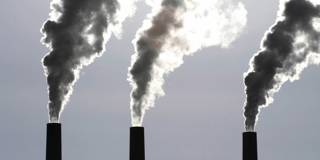As the northern winter draws closer, surging fossil-fuel prices have left many consumers worried. But there may be a silver lining in the form of more aggressive US efforts to tackle climate change – provided the political will for such measures exists.
CAMBRIDGE – Prices of fossil fuels increased sharply in October. European prices for natural gas hit a record peak. Prices for thermal coal in China have also reached all-time highs. The price of US crude oil is above $80 a barrel, its highest level in seven years, prompting US President Joe Biden’s administration in August to call on OPEC and other major oil-exporting countries to increase production.
Although these high prices partly reflect country-specific factors, there must be some more fundamental cause. After all, as with fuel prices, indices of mineral and agricultural commodity prices have also recovered from a six-year slump, re-attaining their 2014 levels. The long-standing correlation of different commodity prices suggests a common macroeconomic explanation. And the obvious reason why energy prices have risen in 2021 is rapid global economic growth.
But what are the environmental implications of elevated fossil-fuel prices, specifically with respect to the fight against climate change? The question is particularly salient as officials from over 200 countries prepare to gather in Glasgow for the UN Climate Change Conference (COP26), where they are expected to declare their intention to achieve net-zero carbon-dioxide emissions by 2050.

CAMBRIDGE – Prices of fossil fuels increased sharply in October. European prices for natural gas hit a record peak. Prices for thermal coal in China have also reached all-time highs. The price of US crude oil is above $80 a barrel, its highest level in seven years, prompting US President Joe Biden’s administration in August to call on OPEC and other major oil-exporting countries to increase production.
Although these high prices partly reflect country-specific factors, there must be some more fundamental cause. After all, as with fuel prices, indices of mineral and agricultural commodity prices have also recovered from a six-year slump, re-attaining their 2014 levels. The long-standing correlation of different commodity prices suggests a common macroeconomic explanation. And the obvious reason why energy prices have risen in 2021 is rapid global economic growth.
But what are the environmental implications of elevated fossil-fuel prices, specifically with respect to the fight against climate change? The question is particularly salient as officials from over 200 countries prepare to gather in Glasgow for the UN Climate Change Conference (COP26), where they are expected to declare their intention to achieve net-zero carbon-dioxide emissions by 2050.